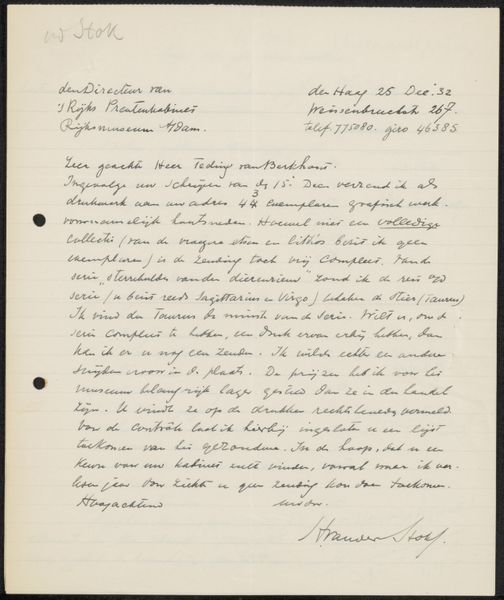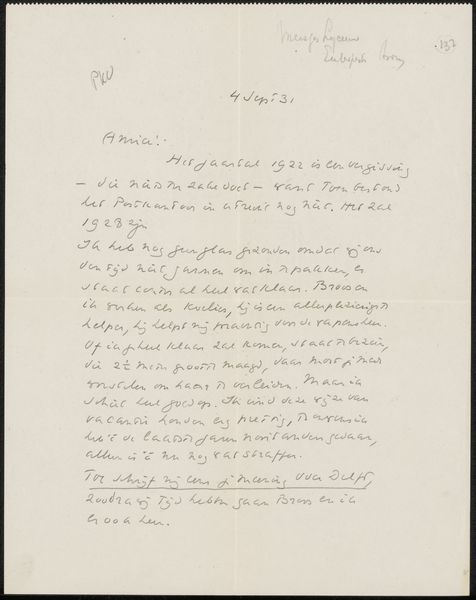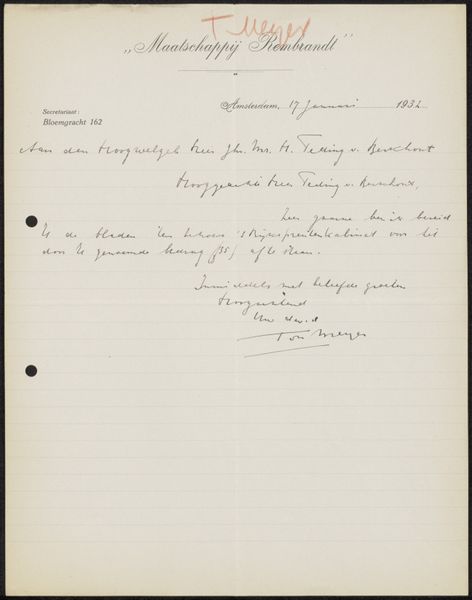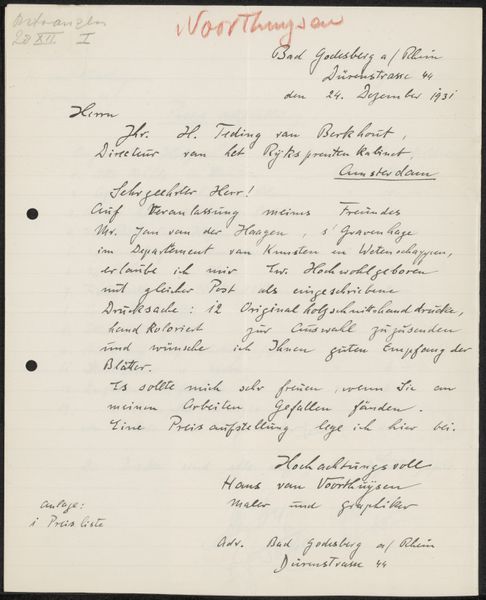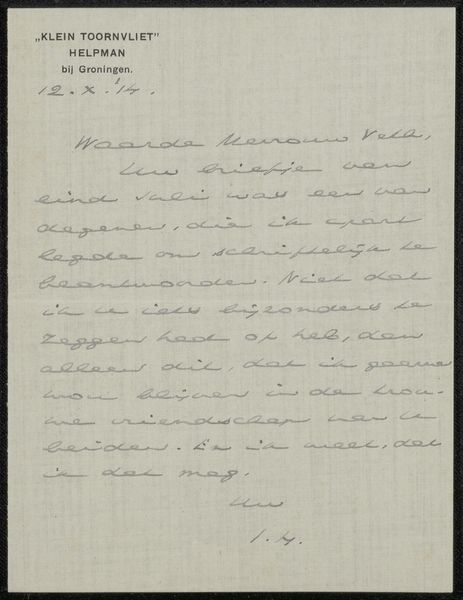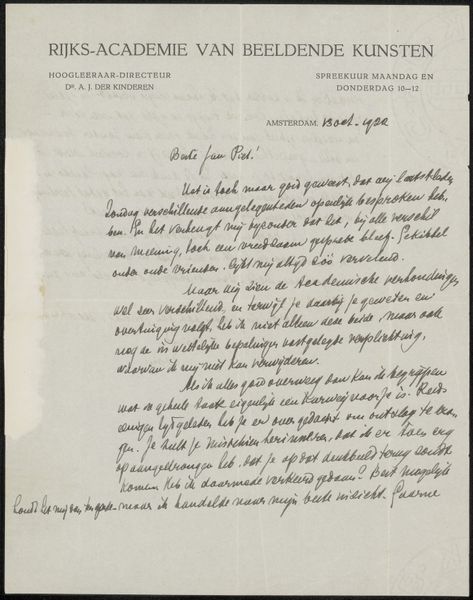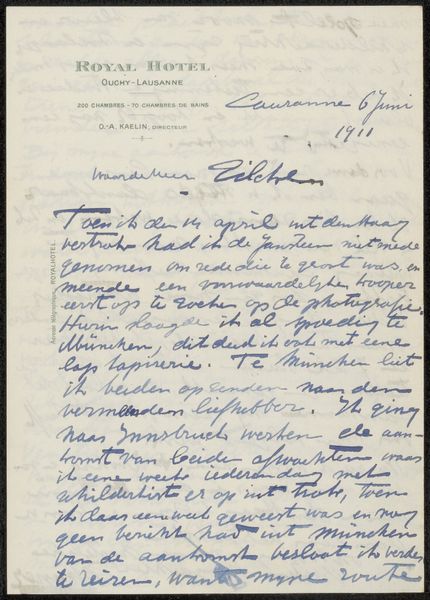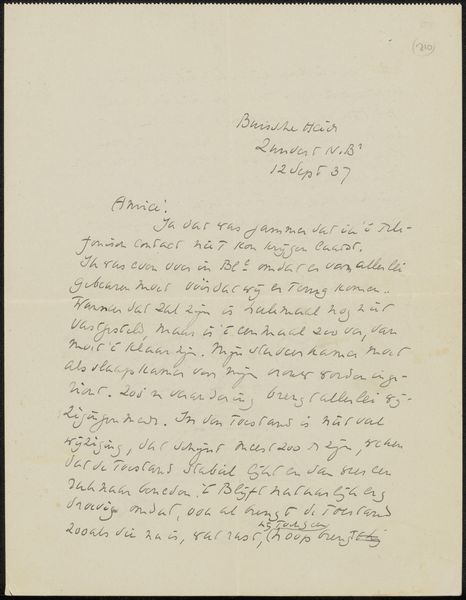
Brief aan jonkheer Hendrik Teding van Berkhout (1879-1969) Possibly 1932
0:00
0:00
henkhenriet
Rijksmuseum
drawing, paper, ink
#
portrait
#
drawing
#
aged paper
#
ink paper printed
#
sketch book
#
hand drawn type
#
paper
#
personal sketchbook
#
ink
#
hand-drawn typeface
#
visual diary
#
sketchbook drawing
#
storyboard and sketchbook work
#
sketchbook art
Copyright: Rijks Museum: Open Domain
Editor: This is "Brief aan jonkheer Hendrik Teding van Berkhout", or "Letter to Esquire Hendrik Teding van Berkhout" from possibly 1932, by Henk Henriët. It’s an ink drawing on paper currently held at the Rijksmuseum. The handwriting feels very personal, almost urgent. What do you see in this piece? Curator: Beyond a simple note, this reveals the economic realities that artists often face. Notice the artist is offering his work at a 50% reduced price and asking to be paid urgently, which highlights their vulnerability within a system that often undervalues artistic labor. What does it say about the support available—or unavailable—to artists during that time, especially considering the date? Editor: So, it's not just about the aesthetic of the letter itself, but the story of financial precarity it hints at? Curator: Precisely. And this brings to mind questions about privilege and access. Teding van Berkhout was a jonkheer, a title of nobility, while Henriët appears to be negotiating from a less powerful position. It underscores social hierarchies embedded in the art world. How does the existence of personal collections like this contribute to or challenge those hierarchies? Editor: That makes me think about the role of institutions like the Rijksmuseum today. Are they actively addressing these historical power imbalances? Curator: It's crucial that museums engage in self-reflection, acknowledging their own complicity in historical injustices. Do they provide opportunities and a platform for marginalized artists to thrive today? Whose stories are prioritized, and how are they presented? These are questions we must continuously ask. Editor: That's a powerful way to look at something as seemingly simple as a handwritten letter. I had not considered the artist's financial desperation or social positioning. Curator: And considering it allows us to interpret and understand this artwork through a different lens. Art is never truly divorced from these issues.
Comments
No comments
Be the first to comment and join the conversation on the ultimate creative platform.


